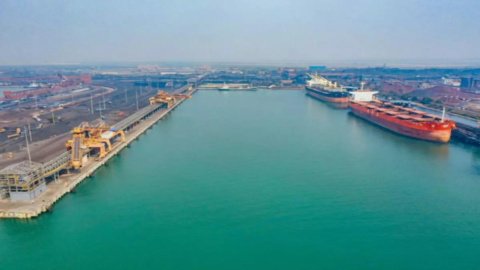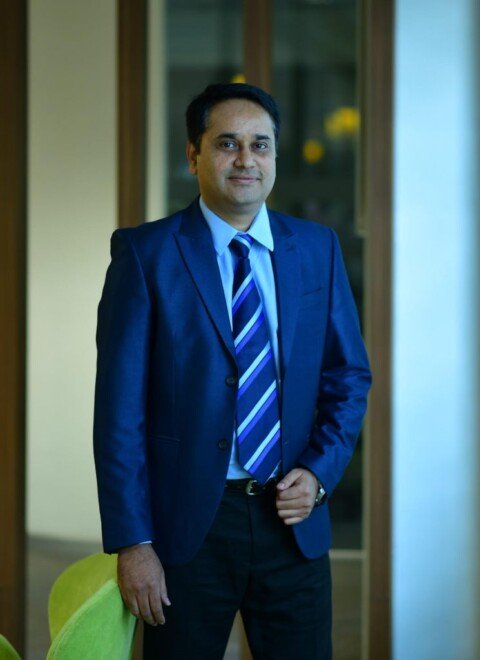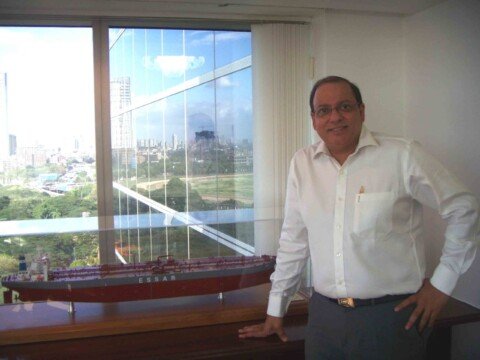Procam Logistics is an asset based, integrated logistics company specialising for more than a decade in the transportation of project cargo. The company is a premier provider of project cargo management, inland movement of heavy cargo, ODC transportation, installation, custom clearance, and also offers indirect tax consulting services to both private and government contractors domestically and internationally. Today, Procam has expanded its presence across 10 locations in India and in all 6 continents with strategic tie ups with International Agency Network. The company has its own fleet of 120 modular Goldhofer hydraulic axles, 30 heavy prime movers/pullers, 2 US Lift System, 400 MT capacity, 4-point lift jack system gantries, and many specialised tools for electrical and mechanical installation. As the name Procam is derived from PROject CArgo Management, the company says it has been focussed on building a sustainable organisation by investing in equipment, technology and people with a mission to be an innovative and process-oriented. Therefore, while Procam Logistics has an asset-based business model, its other subsidiary, Procam Worldwide has a network-based business model.
Dismally untapped vast potential in concretising India’s Logistics Landscape
Seaports are a key value integrator for project cargo integration in India. Ports, terminals and allied infrastructure related to the handling of project cargo are yet to be enhanced, albeit many are under construction. That said, the east coast has a huge potential to grow but unfortunately remains underutilised due to lack of a coherent strategy for their evaluation.
The rapid growth of port infrastructure and cargo traffic in Sri Lanka and Bangladesh however provides an alternative to the global players to access the Indian market by adding more option to optimise their global value chain.
The use of waterways and the setting up of manufacturing plants on the banks of waterways routes can make a huge impact to mitigate the risk posed by heavy and odd dimension cargo during transit in bridges and landside structures. It will also help to integrate with hinterland movement to the main seaport for both inbound and outbound project cargo equipment.
The dire need to accomplish business as usual with more emphasis on Logistics Innovation
Project Logistics landscape in India and a few other Asian countries are different as per project-specific requirements, but the constraints and bottlenecks are largely the same. Most of the project-specific cargo does not fit to the standards of transport dimension parameter of each country and therefore the efforts focussed towards exploring transportation feasibility and risk mitigation to standardising the solutions are done by specialised logistics solutions provider. The solutions are explored to meet such type of challenges by the right mix of transport equipment, technology, domain expertise, and trained and skilled manpower. For example, the infrastructural (port, road, rail, waterway) bottlenecks, overbridges and their structure capacity and limitations, last-mile road feasibility, weather/seasonal impact, are differentiating project cargo landscape of India and other Asian countries.
The government’s focus on the National Logistics Policy (NLP), on the development of coastal and inland waterways will provide good opportunity to optimise cost and transit time of project cargo transportation, and development of the various ports on the east coast will open the gateway to new routes to connect with other Asian and Far East counties.
Freight Efficiency Strategies: Operational modernisation at distribution nodes
The efficiency of project freight transport can be improved by developing an effective collaboration principle with all stakeholders, viz. project owners, equipment manufacturers, and transport operators at the planning stage of the project itself, thereby saving huge cost overrun during the execution of projects.
There are several examples, wherein, after equipments are ready, projects owners look for a mode of transport, transport equipment requirement, approval from regulators, ultimately realising that equipment transport feasibility does not exist and hence not only project completion days gets extended, but huge costs are incurred due to such inefficiency at the planning stage. Besides, due to stiff competition and vendor selection process, there are many instances where the service provider is not able to transport or ship project critical equipment catering to project contracts which result in not only project delay but also attract liquidated damage/claims to the equipment supplier.
The evaluation of transport modal mix, transport equipment selection, cross-border documentation understanding can help to help to improve the efficiency of project freight transport in India by meeting all safety compliances.
Airports are playing a major role in handling project cargo in India and apart from key major seaports. Today, various other smaller airports are also equipped to handle large freighter aircraft. In fact, most of the defence project cargo and critical equipment for power projects are being airlifted to reduce the downtime or expedite the project to meet the project timeline.
Procam Logistics: Ingenuity in the DNA
Procam Logistics is an asset-based, integrated project cargo transportation company having own modular hydraulic axles, heavy pullers, special trailers for wind blade transportation, hydraulic lift system, pan-India warehouse footprint, special rigging equipments, and own customs brokerage license. We engage with our client—from the stage of feasibility study till delivery of their cargo at the project site—adding value at every stage of the movement.
Our project management platform provide milestone planning, engineering, documentation, visibility and monitoring tools to our clients to manage and control the overall movement process—from plant to foundation including warehousing and installation.
With a team of 150+ specialised crew, comprising skilled drivers and operators, engineers, riggers, industry domain experts, we optimise the use of our equipment and provide advanced project-specific solutions. Our Health, Safety and Environment (HSE) practices are compliant with world-class standards and audited by our global clients. Safety measures, real-time video streaming of our heavy load and safety audit enables our drivers and operators to upgrade their skills continuously, while our in-house training module and knowledge management tools help the team stay updated on various development on regulations, client requirements, understanding and monitoring of each milestone, thereby providing a competitive advantage in the project cargo business.
Incorporating diverse perspectives and Performing to the Best of Ability
As always, we are engaged in handling global major infrastructural projects in refinery, railways, power and automotive sectors.
Our service bandwidth helps to meet the requirement of diverse clients. We are determined to provide competitive transportation options for oversized and odd dimensioned shipment. In the last 11 years, we have handled more than 3000+ heavy equipments.
We are providing vessel chartering of project cargo and have handled various projects globally including land transportation in Afghanistan, Laos, Vietnam, Nigeria, Germany, Italy, USA and Spain.
Our Installation and Rigging team have installed India’s heaviest press machine of 12500 MT capacity. Our in-house designed and developed warehouse management software is managing inventory of 10,000 cr + and our customised project import registration and reconciliation software is helping our clients to handle documentation of their projects as per customs compliance.
Benchmarking Experience, Culture, and Operational Achievements
We are a pioneer in metro rail car handling in India and transported more than 2000+ metro rail car for Delhi, Bangalore, Hyderabad, Nagpur, Pune, Ahmedabad, Jaipur and Mumbai metro divisions.
We introduced 4-point lift in India for the first time in 2011 to load and unload metro car, commercial motor vehicles, and locomotives. The scarcity of land for metro depots is the biggest bottleneck in depot designing, especially in the city where land prices are very high. We explored the possibility of replacing heavy crane which requires comparatively more space for unloading and trailer maneuvering. The land allocated to place crane is not being used for any other purpose, so we proposed to use 4-point lift system.
We imported a 2x400T Lift system from the USA, which helps to optimise depot space requirement. This equipment provides not only a safe lifting solution but also requires only one-third of land compared to a crane and it’s easy to handle and transport. Now the use of 4-point lift system is institutionalised by most of the metro corporations and rail car manufacturer.
We have been chartering breakbulk ships and project cargo geared vessels but due to low commitment of transit time and no clarity on the availability of ship at load port as per schedule, we started exploring using alternate shipping solution. In 2010-11, we moved breakbulk and odd dimension cargo on container and Ro-Ro vessel, and now cargo up to even 110 tonnes are being shipped in container vessels. Our engineering team works with major container carrier and Ro-Ro vessel owners to design a feasible solution to move heavy lift and odd dimension cargo on a container vessel.
Time is ripe for Incremental and Radical Changes
We are witnessing radical change due to the implementation of online ODC permission. Ministry of Road Transport and Highways (MoRTH) did excellent work in defining the various category of heavy cargo based on the number of modular axles required to transport heavy load under HT-1 to HT-13 category and also allowed online real-time permission of gross vehicle weight up to 169 tonnes. Recently, the transport ministry also reduced online permission of HT-3 category load from 30 days to 15 days. In the last 6 years, 65000+ odd dimension and heavy load were transported, and based on past experiences, it is expected that the data collected so far will help to develop more industry-friendly initiatives by the regulators for movement of oversized cargo. However, overloads still happen in the rigid-body of mechanical trailer and various customised trailers which are not compliant with CMVR 1989 and MV Act 1988 (Rule 93).
We hope that with more awareness of bridge and structure safety, the issues of overloading can also be regulated in the coming days and more and more cargo will be transported on modular hydraulic axles to provide a safe mode for movement.







